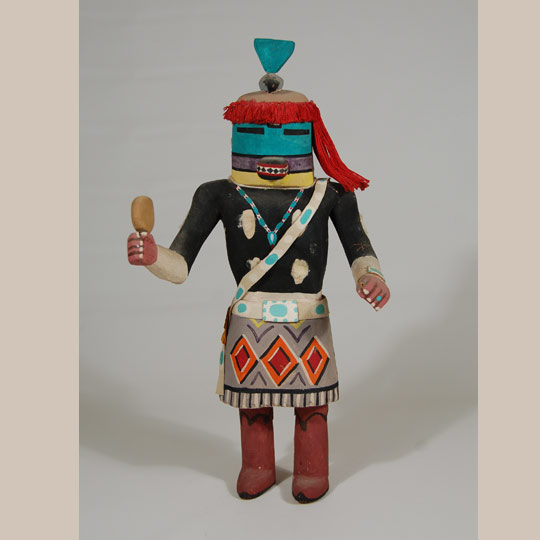Adobe Gallery Blog
Subject: Hopi Older Unsigned Tasap Katsina Doll
The Hopi have katsinam that honor and depict other tribes that are their neighbors, among them, the Navajo (Diné). This male version of Tasavkatsinam (Tasaf, Tasap) is in honor of their near neighboring tribe, the Diné. Katsina of this style are not borrowed from other tribes but are in honor of the other tribes. They are Hopi Katsina in all respects and are accorded the same reverence and honor as any other katsina. Their function, as is the function of all Hopi katsina, is to serve the Hopi as messengers to the rain gods.
This carving by an unknown Hopi carver probably dates to circa 1950s. He features an elegant arrangement of red hair made from fine red yarn. The bandoleer across his chest is made from deer hide as is the concha belt and the ketoh on his left wrist.
Condition: He had cotton glued to the four white spots on his chest and back and the white spot on each of his arms but most of the cotton is missing. He carries a gourd rattle in his right hand but whatever he might have had in his left hand is missing as are the feathers on the right side of the mask. There is a faint crack in the paint behind the right shoulder but it is not significant.
Provenance: from the estate of Michael Frost of Texas
Recommended Reading: Kachinas: a Hopi Artist's Documentary by Barton Wright


